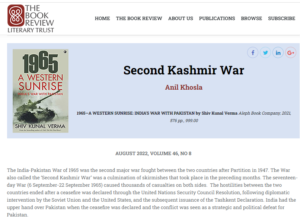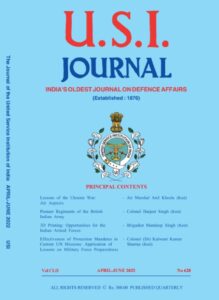
Published by Book review literary Trust
BOOK REVIEW:
1965 A WESTERN SUNRISE
INDIA’S WAR WITH PAKISTAN
By Shiv Kunal Verma
Review by: Air Marshal Anil Khosla (Retd) PVSM, AVSM, VM
Former Vice Chief of Air Staff, Indian Air Force.
The Indo-Pakistani war of 1965 was the second major war fought between the two countries after the partition in 1947. The war also called the “Second Kashmir War”, was a culmination of skirmishes that took place in the preceding months. The seventeen-day war (06 Sep – 22 Sep 65) caused thousands of casualties on both sides. The hostilities between the two countries ended after a ceasefire was declared through United Nations Security Council Resolution, following diplomatic intervention by the Soviet Union and the United States, and the subsequent issuance of the Tashkent declaration. India had the upper hand over Pakistan when the ceasefire was declared and the conflict was seen as a strategic and political defeat for Pakistan.
Continue reading “279: BOOK REVIEW: 1965 A WESTERN SUNRISE – INDIA’S WAR WITH PAKISTAN”


